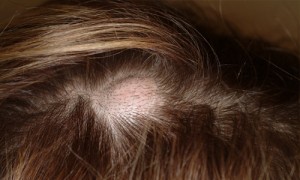Your skin is the most visible part of you. As such lumps and tags can be unsightly, irritating and sometimes worrying. At My Surgical Specialist, removing these lesions is simple and can be done using local anaesthetic in less than 30 minutes.
Following a thorough consultation, Mr Alkhaffaf will arrange any investigations necessary and organise a time suitable for you to have your lumps, tags or cysts removed.
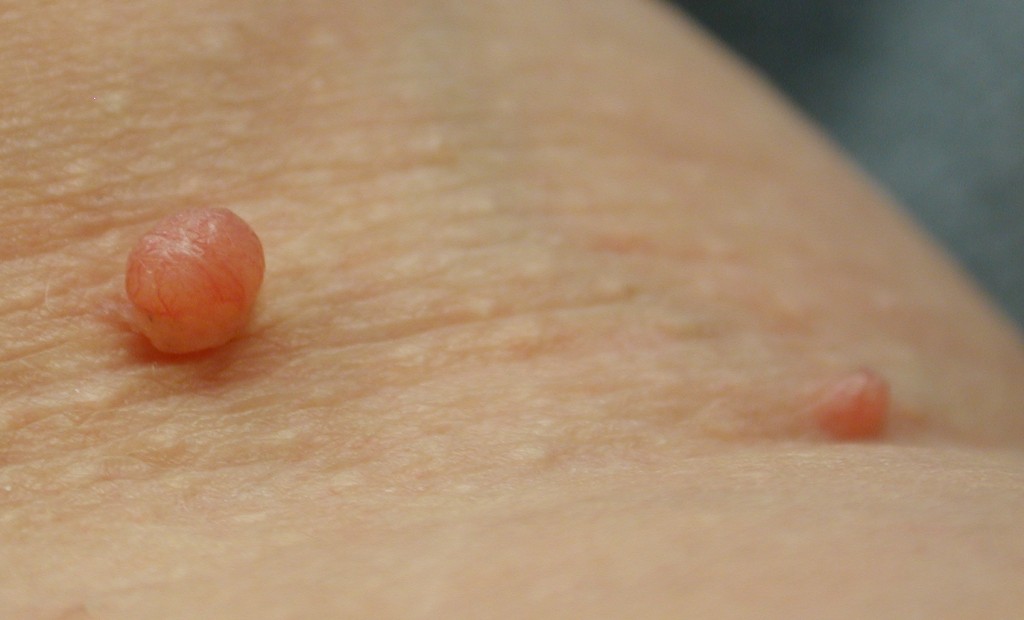
Common Questions About Skin Lumps
What are skin lumps?
The term ‘skin lump’ covers a wide variety of conditions, many of them harmless. Skin lumps are an abnormal growth on or under your skin and can occur anywhere on the body. They are extremely common and most people will have at least one at any one time.
What are the commonest types of skin lumps?
Skin lumps are mostly benign but in some very rare circumstances can be more worrying. The commonest skin lumps include:
Skin Tags
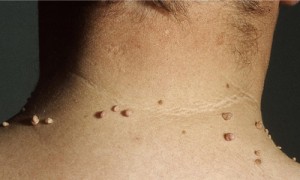
Skin tags are small fleshy lumps that hang off the skin. They can have the same colour as your skin or be brown in colour. Skin tags are harmless but can be unsightly or a nuisance if they catch on your clothes.
Moles
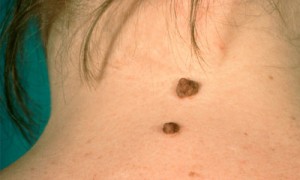
Moles are skin growths that are made up of pigmented (coloured) cells called melanocytes. They can be flat or raised, rough or smooth, oval or round. Some have hairs growing from them. Most moles are benign, however in rare cases, moles can develop into an aggressive skin cancer called ‘melanoma’. If you have a long established mole which has increased in size, bleeds, itches or has become darker, or you have developed a new mole, you should seek immediate medical advice.
Sebaceous Cysts
Sebaceous cysts are smooth fluid-filled lumps. They can occur all over the body and are extremely common. They can increase and decrease in size and in some cases become infected. Sebaceous cysts are entirely benign.
Lipomas
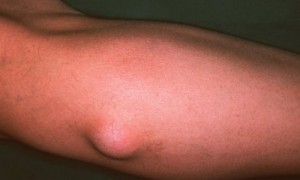
Lipomas are fatty growths which sit under the skin. They are distinct in that they are usually mobile and not tethered to the skin. Lipomas can occur anywhere around the body and can be small, large, single or multiple. Lipomas are benign, but in some rare cases they can be mimicked by a cancerous condition called ‘liposarcomas’.
Dermatofibromas
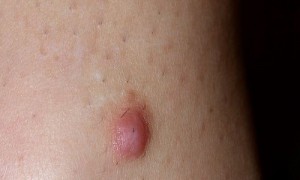
Dermatofibroma is a fibrous lump in the skin, darker in colour than the surrounding area and most frequently found on the legs. These are benign lesions. Dermatofibroma is often itchy and feels quite firm.
How are skin lesions treated?
Generally speaking, most skin lumps can be removed with a simple surgical procedure using a local anaesthetic. This means that there is no need for you to be admitted into a formal ward and ensures that you can be discharged quickly to return to your normal activities.
We recommend that all skin lumps that we remove are sent to be analysed by a pathologist under a microscope. This gives you the reassurance that your lump was completely harmless and has been entirely removed.
Are there any risks with treatment?
Surgical procedures to remove skin lumps are both safe and effective. However no procedure or surgery is risk-free. Complications following surgery can include:
–Scarring: Removing a lump will always leave a scar. The degree of scarring depends on a number of factors including your predisposition to scarring, the size of the wound required to remove the lump and also the location of the body. Some patients have rare conditions which can lead to excessive scarring.
–Bleeding: Bleeding is rare but can occur with any surgical procedure.
–Recurrence: In the case of sebaceous cysts and lipomas, it may not be possible to entirely remove the lump. This increases the risk of the lump returning.
–Wound infection: Our meticulous surgical technique means that the risk of this complication is very low. Most infections occur several days after the procedure and can be treated with a short dose of antibiotics.
–Seroma: In the case of a large lipoma which requires a more invasive procedure to remove, the cavity which is left behind can fill up with fluid. This is called a seroma. Whilst most seromas resolve without any treatment, it is sometimes necessary to perform a further procedure.

